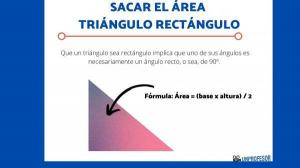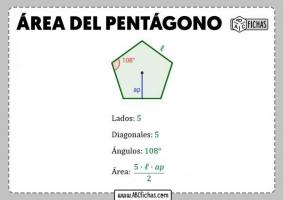What are POLYEDROS and how are they classified

Welcome to this new lesson that we bring you from a Teacher. In this article you will find key information for your mathematical development, since we are going to talk about what are polyhedra and how are they classified. In addition, we will leave you a exercise so that you practice and its solution, so that you can check that you have understood it. Let's go there!
We can define the polyhedra in a simple way, because I just knowon geometric bodies that have a specified number of plane faces What are they polygons.
They are normally three-dimensional and have to be bounded, that is, limited by a certain and finite number of flat surfaces. In other words, a polyhedron cannot be one that has infinite faces. Furthermore, they contain a finite volume.
The names we give to polyhedra come from classical Greek and refer to the number of faces that this specific geometric body has:
- tetrahedron (has 4 faces)
- pentahedron (has 5 faces)
- hexahedron (has 6 faces) ...
Also, if all their faces and angles are equal, we give them the last name "regular". That is, if a five-sided polyhedron has all its faces the same and its angles as well, we will call it a regular pentahedron.
Polyhedra can be classified according to different criteria. Thus, we can find:
- Regular face polyhedra: all its faces are regular polygons, that is, polygons that have their sides of the same length and equal angles.
- Irregular Faced Polyhedra: their faces are not all regular polygons.
- Convex polyhedra: if we take any two points of the polyhedron, the line that joins them is internal to the figure, that is, the segment does not protrude outside the polyhedron.
- Concave polyhedra: if we take any two points of the polyhedron, we can find a line segment that protrudes from the polyhedron to the outside. An example is known as a faceted torus.
- Uniform face polyhedra: all their faces are the same.
- Non-uniform face polyhedra: not all their faces are the same.
- Polyhedra with uniform edges: if two faces that are equal are joined on each edge (polyhedron line), they are called polyhedra with uniform edges.
- Non-uniform edge polyhedra: on some edge, two faces that are not the same are joined.
- Uniform Vertex Polyhedra: if the same number of faces are joined in all its vertices and in the same order, they are called polyhedra with uniform vertices.
- Regular polyhedra (or also known as regular and uniform): if it is the case that the polyhedron has regular faces, uniform faces, uniform vertices and uniform edges.
- Irregular polyhedra: if it is a polyhedron in which either the faces are not regular, or they are not uniform, or its vertices or edges are not uniform. Only if one of these conditions is fulfilled, it is already considered an irregular polyhedron.
Classification of polyhedra according to number of faces
On the other hand, the classification by number of faces can also be considered:
- Tetrahedron: 4 faces
- Pentahedron: 5 faces
- Hexahedron: 6 faces
- Heptahedron: 7 faces
- Octahedron or octohedron: 8 faces
- Eneahedron or nonahedron: 9 faces
- Decahedron: 10 faces
- ...
We leave you here the solutions to the activities proposed in the previous section, so that you can verify that you have done them correctly:
- No, because a regular polyhedron requires a series of conditions to be met, while in the polyhedron with regular faces all that is needed is that the faces of the polyhedron be polygons regular.
- For a polyhedron to be considered regular, these conditions must be met: it must be regular faces, it must have uniform faces, it must have uniform vertices and it must have edges uniforms. All conditions must be met at the same time.
If you found this article useful, feel free to browse the Mathematics tab or use the search engine at the top of the web. You can find more information about polyhedra! You can also share it with your classmates.
If you want to read more articles similar to What are polyhedra and how are they classified - with examples, we recommend that you enter our category of Geometry.



